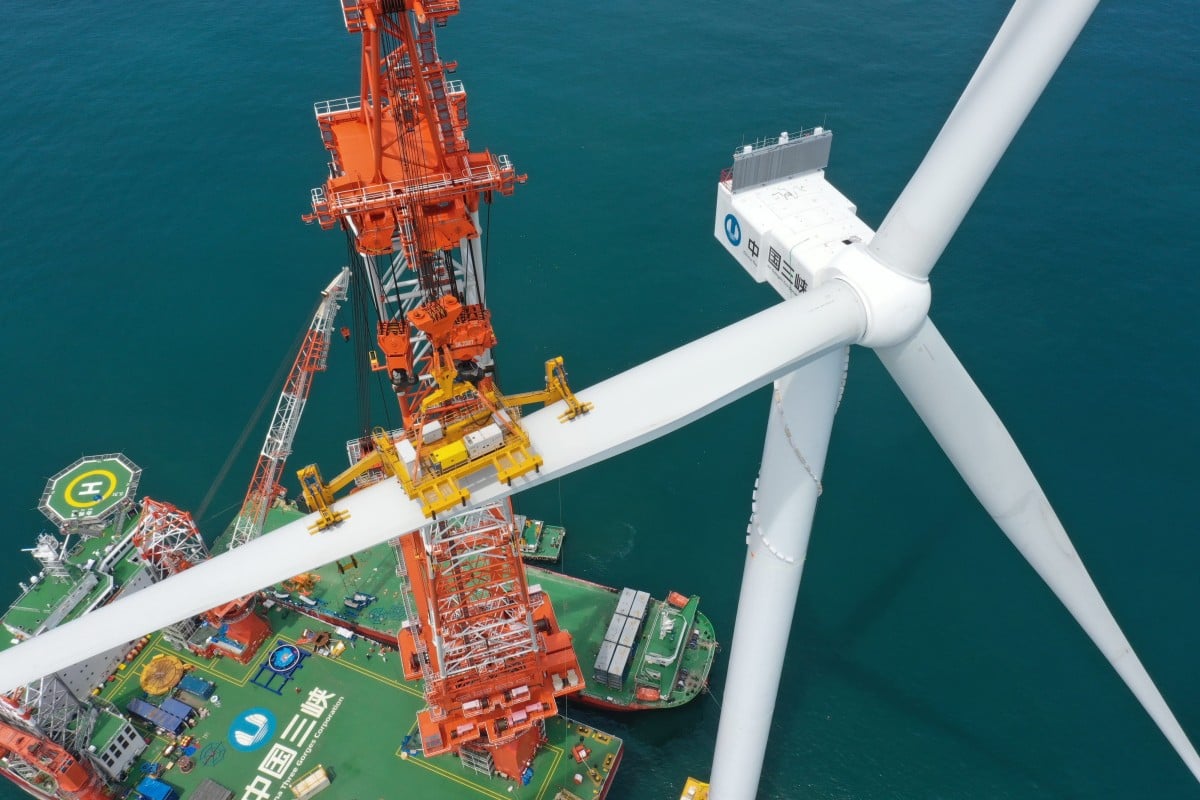Impact Of China's Rare Earth Export Controls On Tesla's Optimus Robot

Table of Contents
- Rare Earth Elements: The Unsung Heroes of Robotics
- Critical Role of Rare Earths in Optimus Robot Motors
- Beyond Motors: Rare Earths in Other Robot Components
- China's Dominance in Rare Earth Supply and its Geopolitical Implications
- China's Control of the Rare Earth Supply Chain
- Export Controls and Their Potential Impact on Tesla
- Tesla's Strategies to Mitigate Rare Earth Dependency
- Diversification of Supply Chains
- Technological Innovation and Substitution
- Conclusion
Rare Earth Elements: The Unsung Heroes of Robotics
Rare earth elements are not so rare, but their extraction and processing are complex, making them strategically important. These elements possess unique magnetic and electronic properties vital for high-performance technology. Their absence would severely hamper the capabilities of many modern devices.
Critical Role of Rare Earths in Optimus Robot Motors
The heart of Optimus's movement lies in its motors and actuators, which heavily rely on rare earth magnets. Specifically, neodymium (Nd), praseodymium (Pr), and dysprosium (Dy) are crucial. These elements, when alloyed, create incredibly powerful and lightweight magnets with high coercivity (resistance to demagnetization).
- High Power Density: Neodymium magnets allow for smaller, lighter, and more powerful motors, crucial for the agility and efficiency of a humanoid robot.
- Enhanced Efficiency: The superior magnetic properties translate directly into increased energy efficiency, extending Optimus's operational time on a single charge.
- Temperature Stability: Dysprosium contributes to the magnet's stability at higher temperatures, essential for reliable performance under various operating conditions.
- Limited Alternatives: Currently, there are no readily available alternatives at a comparable scale that offer the same power density and performance characteristics.
Beyond Motors: Rare Earths in Other Robot Components
Rare earth elements aren't just confined to motors. They also play a critical role in other components:
- Sensors: Many high-precision sensors rely on rare earth elements for their functionality. These sensors are vital for Optimus's navigation, object recognition, and interaction with its environment.
- Actuators: Beyond the primary motors, numerous smaller actuators utilize rare earth magnets for precise and controlled movement.
- Control Systems: Certain electronic components within Optimus's control systems may also incorporate rare earth elements.
Sourcing these materials from alternative sources presents significant challenges, potentially leading to increased production costs and compromises in robot performance.
China's Dominance in Rare Earth Supply and its Geopolitical Implications
China's dominance in the rare earth market is undeniable. It controls a vast majority of global rare earth reserves and dominates the mining, processing, and refining stages of the supply chain.
China's Control of the Rare Earth Supply Chain
- Market Share: China holds over 70% of the global rare earth processing capacity, giving it immense leverage over the global market.
- Environmental Concerns: Rare earth mining and processing are environmentally intensive, raising concerns about pollution and waste management. China's environmental regulations are a key factor affecting global supply.
- Social Issues: Concerns exist regarding labor practices in some Chinese rare earth mines.
Export Controls and Their Potential Impact on Tesla
China's ability to control the flow of rare earth elements gives it significant geopolitical leverage. Potential scenarios include:
- Tariffs: Imposing tariffs on rare earth exports could significantly increase the cost of production for Tesla.
- Quotas: Limiting the quantity of rare earth exports could constrain Tesla's production capacity.
- Outright Bans: A complete ban on exports would be devastating to Tesla's Optimus program and the broader robotics industry.
These scenarios could severely impact Tesla's production timelines, profitability, and ultimately, its ability to compete in the burgeoning robotics market.
Tesla's Strategies to Mitigate Rare Earth Dependency
Tesla is acutely aware of the risks associated with its reliance on China for rare earth elements and is actively pursuing various strategies to mitigate this dependency.
Diversification of Supply Chains
Tesla is actively exploring partnerships and investments in rare earth mining and processing facilities in other countries:
- Australia: Australia possesses significant rare earth reserves and is actively developing its processing capacity.
- United States: The US government is investing heavily in domestic rare earth production to reduce its reliance on China.
- Canada: Canada also has significant rare earth reserves and is exploring opportunities to increase its production capacity.
However, establishing new supply chains is a long-term undertaking requiring substantial investment and time.
Technological Innovation and Substitution
Tesla is also investing heavily in research and development to reduce its reliance on rare earth elements:
- Alternative Magnet Materials: Research is ongoing into developing alternative magnet materials that don't rely on rare earths. However, these alternatives often compromise on power density or other key performance characteristics.
- Design Optimization: Optimizing the design of motors and other components could potentially reduce the amount of rare earth elements required.
- Recycling and Reuse: Improving recycling processes for rare earth elements can help reduce the demand for newly mined materials.
Conclusion
China's control over rare earth elements poses a significant risk to Tesla's Optimus robot project and the broader robotics industry. While Tesla is actively pursuing strategies to diversify its supply chains and explore technological alternatives, the challenge highlights the critical need for a more resilient and diversified global rare earth supply chain. The geopolitical implications are substantial, underscoring the urgent need for securing a stable and reliable supply of these crucial materials. The future of advanced robotics, and indeed many technological sectors, is inextricably linked to resolving this critical challenge.
Call to Action: Stay informed about the evolving geopolitical landscape and the impact of rare earth export controls on the future of robotics and electric vehicles. Continue to monitor developments related to Tesla's Optimus robot and the ongoing efforts to secure a resilient supply chain for these crucial rare earth elements. Understanding the dynamics of rare earth supply is essential for anyone interested in the future of advanced technology.

 La Fires Selling Sunset Star Highlights Landlord Price Gouging Concerns
La Fires Selling Sunset Star Highlights Landlord Price Gouging Concerns
 Ja Morant Under Nba Investigation A Report On The Latest Developments
Ja Morant Under Nba Investigation A Report On The Latest Developments
 Stock Market Data Dow And S And P 500 April 23 2024
Stock Market Data Dow And S And P 500 April 23 2024
 Canadian Dollar Performance A Mixed Bag
Canadian Dollar Performance A Mixed Bag
 From Scatological Data To Engaging Audio An Ai Driven Poop Podcast
From Scatological Data To Engaging Audio An Ai Driven Poop Podcast
